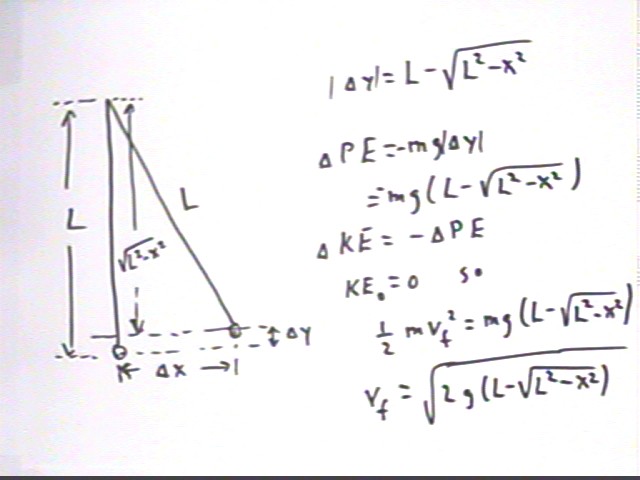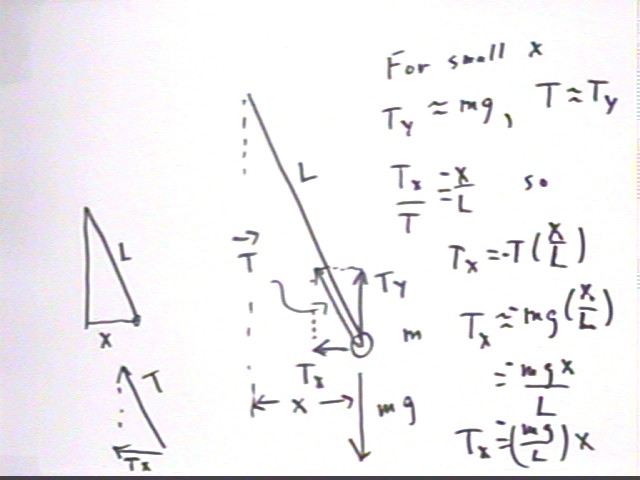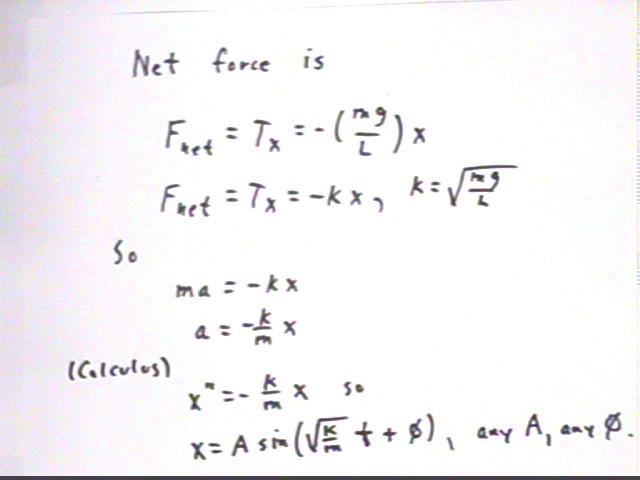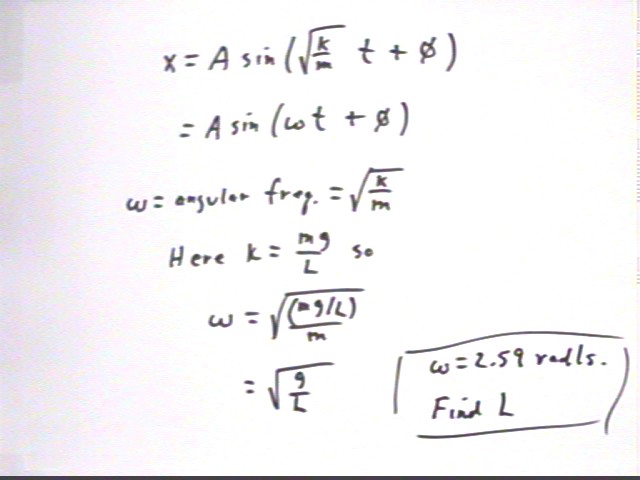
Physics I Experiment 1202
Using a paperclip or small coin on top of a cylindrical pendulum mass, obtain data which will allow you to determine the velocity of a pendulum at equilibrium vs. x when released from rest at displacement x from equilibrium.
Figure out the velocity of the pendulum based on your observations of the motion of the paperclip or coin.
Figure out the velocity the pendulum should attain based on the length of the pendulum and the pullback. Use conservation of energy and the figure below:

We observed the synchronization of a pendulum with a simulation consisting of the vertical projection of a point moving in a circular path. To 3 significant figures the angular frequency of this motion was found to be 2.59 rad/s. We will use this to predict the length of the pendulum.
The next figure shows the forces acting on the pendulum of length L when displaced horizontally a distance x from its equilibrium position. When the pendulum is swinging freely these forces include the weight m g acting vertically downward and the tension T acting in the direction of the string. The tension is shown, as well as its components Tx and Ty.

Tx is the net force acting on the pendulum, again to a very good approximation if x is small compared to L.
Fnet = Tx = - (m g / L) * x is of the form Fnet = - k x with k = -m g / L.
Since Fnet = m a it follows that
Applying Calculus (General College Physics and Principles of Physics students should understand everything up to this point) we have a = x '', where the differentiation is with respect to clock time t, so that
- m x '' = - k x or
- x '' = -k /m * x.
The only functions whose second derivatives are negative multiples of itself are the sine and cosine functions. Calculus-literate students can easily verify that x
- x = A sin( sqrt(k / m) * t + phi)
is a solution for any A and any phi. This solution can be written
- x = A sin(omega * t + phi),
where omega is the angular frequency of the motion.
Back to the non-calculus world we use the following result of the above:
- x = A sin(omega * t + phi),

Using the fact that omega = sqrt(k / m), and the fact that for our pendulum k = m g / L, find from the fact that omega = 2.59 rad/s the length L of the pendulum. We'll check this against reality next class.
